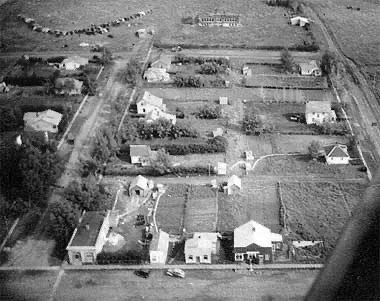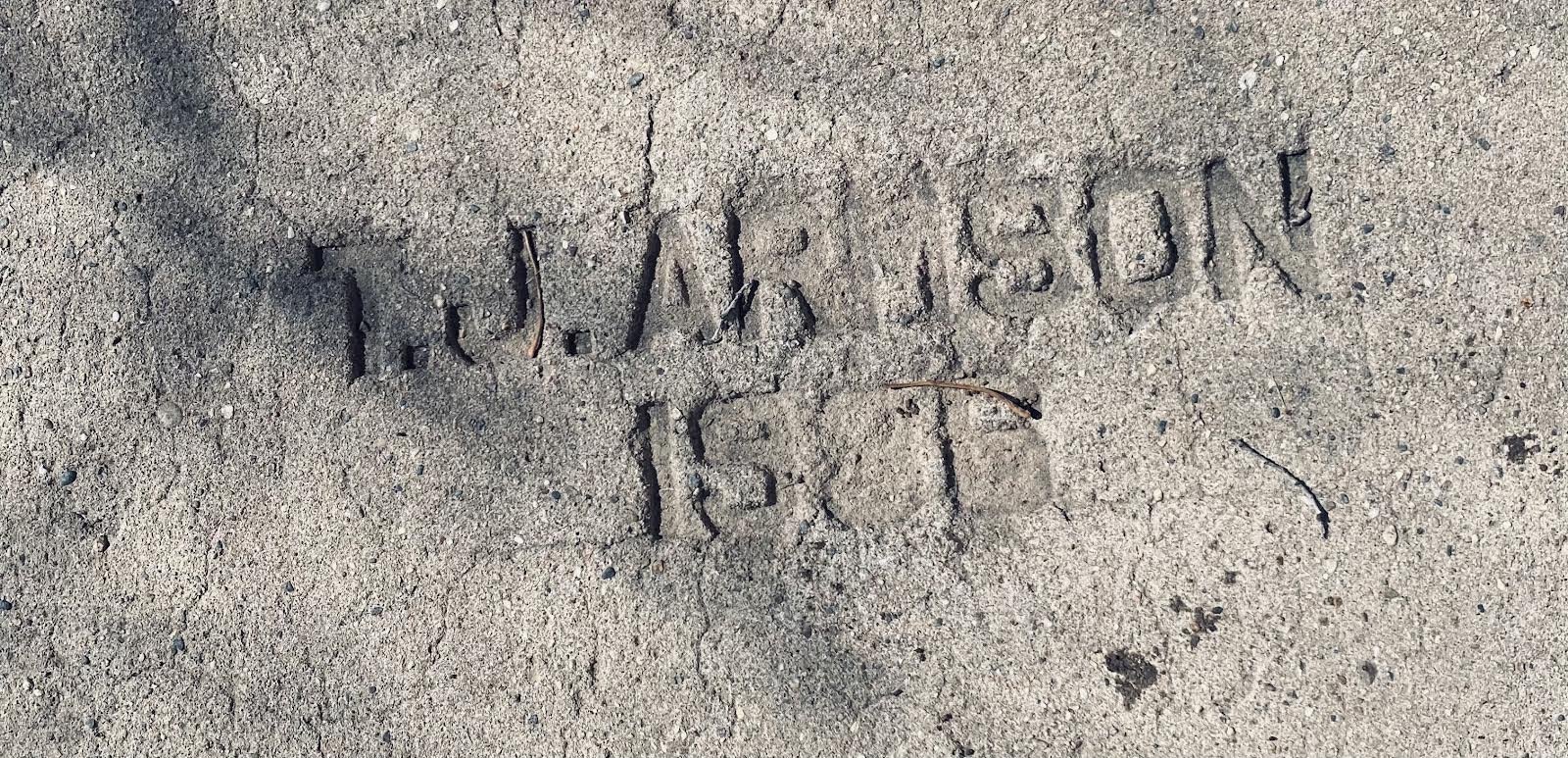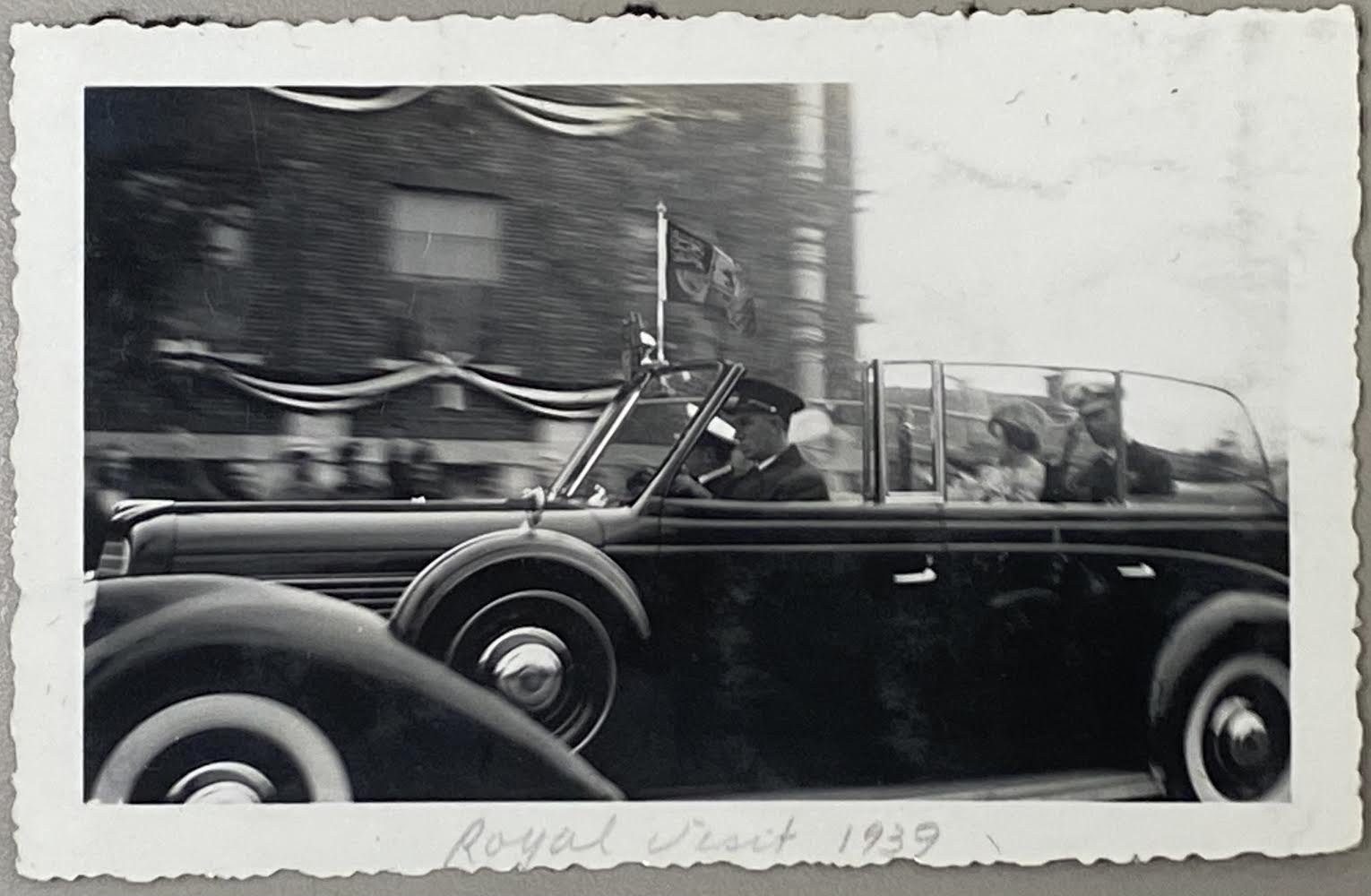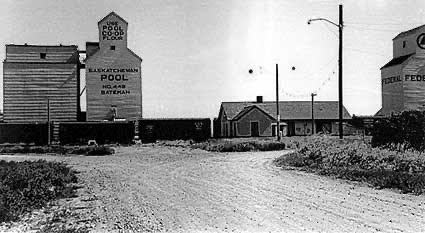Bateman, SK: A Ghost Town with a Fascinating Connection to Moose Jaw
By Nick Murray
One of the few remaining structures in Bateman, SK - photo by Nick Murray
Wikipedia lists 140 different Saskatchewan towns and villages as Ghost Towns.
According to their definition; a “Ghost Town” is a town that “once had a considerable population, that has since dwindled in numbers causing some or all its businesses to close, either due to the rerouting of a highway, train tracks being pulled, or exhaustion of a natural resource“.
Basically it’s a town inhabited only by the ghosts of its own past.
Ghost towns are so prevalent in the province that Saskatchewan even has its own Ghost Town Trail, encompassing 675 km along Highway 13. The trail includes towns such as Govenlock, Ravenscrag, Horizon, Trossachs and Wauchope, as well as countless other wonderfully titled destinations.
Each town has its own unique history, and from each town there are displaced citizens; in some cases, hundreds of them, who carry within them the detailed memories of these towns’ pasts.
One such ghost town is not all that far from Moose Jaw; just 126 km SW and, by car, about 20 minutes North West of Gravelbourg. Its also a ghost town whose history directly intertwines with that of Moose Jaw’s.
Bateman, Saskatchewan was once a bumpin’ little town. It had a bank and grocery stores; grain elevators and a power plant. It had a hockey rink and a curling club; and it had a popular outdoor theatre that attracted guests from around the province. In the 1920’s Bateman was home to as many as 300 citizens.
Bateman in the 50’s - Bateman Historical Museum
Bateman was humble and quaint and a perfectly thriving little town not all that far from larger centres like Gravelbourg and Assiniboia. A friendly, safe community with a nice school. A place where parents could comfortably raise their children, while still enjoying some of the amenities from the larger towns nearby.
Bateman - Source: Bateman Historical Museum
One of Bateman’s finest citizens was a man named Harold Woodside.
Called “Doc” by those who knew him, Woodside was the countryside’s resident physician for nearly thirty years. During the depression he did much of his work without being paid, travelling by buggy and sleigh, taking care of the sick and injured.
Dr. Harold Woodside, looking dapper, 1948 - Pic source: Donna Leslie
A local farmer named Ross Armson once remarked that Doc brought his mother into the world. She was born a Triplet. In lieu of an incubator, Doc lay the three babies on the door of an old wood stove and watched over them while the mother rested.
Could this Ross Armson be related to the T.J Armson who poured the town’s sidewalks in 1986
Doc Woodside won $50k in a lottery in 1939; making him a rather wealthy man.
For reference, $50k in 1939 is the equivalent of $1.2 million today.
With his winnings, Woodside bought candy for every kid in Bateman.
Harold Woodside spending some of that lottery loot at Richard’s General Store in 1939 - pic source: Donna Leslie
Canada-Pacific Railway’s Royal Train reached Regina on May 25th, 1939.
That was the first and only time King George IV and Queen Elizabeth came to the Queen City and to Moose Jaw.
The visit, although just 30 minutes long, was a big deal for the city, covered by newspapers across the nation. 50,000 people filled the streets of downtown Moose Jaw to greet the Royals on their journey.
To put the grandiosity of that into perspective; Moose Jaw’s population at the time was still below 20,000.
Royal Visit 1939 - pic courtesy of the Moose Jaw Public Library Archives
It may be difficult for the Canadians of 2023 to understand just how excited the Canadians of 1939 were to see “His Majesty and the winsome and dainty Scottish lassie whom he took for his bride.”
But it truly was a momentous occasion for the city, attracting visitors from far and wide.
Moose Jaw Times Herald, March 26, 1939
On his own dime “Doc” Woodside sent all 100 of Bateman school’s students to Regina to brave the crowds and witness the spectacle.
That sounds like a pretty decent fellow.
Moose Jaw Times Herald, March 26 1939
It was in and around that time when Harold Woodside opted to move to Moose Jaw and therein lies one fascinating connection between the ghost town of Bateman, SK and the now “Notorious City” we call Moose Jaw.
Woodside opened a practice at 102 12 High St. E. That’s in the Walter Scott building, where Chrysalis Coffee now resides.
Woodside lived at 667 Hochelaga West when he moved to town, and at some point within the next couple years he moved to 1120 Redland Ave where he and his wife Mary lived in 1948.
They had three children together; Marilyn, Tom & Bill.
It was in 1948 that the good Doctor passed away; his life cut short at the relatively young age of 56. The cause of Woodside’s death was “congenital heart failure.
Moose Jaw Times Herald, April 1948
His wife moved to West Vancouver, British Columbia the next year and lived another 31 years before passing in 1980.
Woodside’s remains were buried in the neighbourhood he was born in; the Port Arthur area of Thunder Bay.
Harold Woodside had a ward named after him at the Union Hospital in Moose Jaw. Currently, there is no picture of him on the Physicians’ Memorial Wall at the Dr. F.H. Wigmore Hospital.
But, back to Bateman.
Like most “ghost towns” in the Prairies, Bateman fell victim to progress and a changing of the times. First, it was the rail road traffic that dried up; then the abandonment of those grain elevators.
Grain elevator and train station in 1970 - Bateman Historical Museum
Beginning in 1966, the Bateman school began its slow immersion with the schools in Gravelbourg. First to go were the High School Classes, one after another they amalgamated with the larger town. The K-8 elementary grades hung on for another three decades but ultimately shuttered for good, in 1996, when the local schools consolidated.
The school’s closure was, to some extent, the once vibrant community’s death knell; Bateman’s population quickly withered after that.
By 2000 there were zero people living there.
Just ghost houses, ghost buildings and ghost streets. Most of the abandoned homes and buildings came down within the next few years.
That’s according to ForgottenLives.ca, a website dedicated to “keeping the memory of the Saskatchewan pioneers alive by documenting the houses, barns, churches, schools and final resting places of people who have gone before us.“
However, after visiting what’s left of the town, I became a little skeptical.
I stopped in to Bateman while on an afternoon drive with my family, in the middle of April.
We parked our Jeep on HWY 610, the town’s Main St. We had only just exited the vehicle and taken a few steps when my wife noticed something poke it’s head out of a hole beneath old Historical Museum building.
It was a dog.
Leary, we kept our distance, fearing that maybe a pack of blood-thirsty, zombie street dogs would follow it out of the hole.
But the dog neither attacked us nor disappeared into a cloud of vapour. It wasn’t murderous or ghostly. In fact, it was handsome, pleasant and healthy.
By “healthy”, I mean well-fed. Clearly this was a dog living in the lap of luxury.
After sniffing around for a bit; and a round of obligatory pettings, the dog scurried off in the direction of 2nd Avenue, where a house stood. A house that looked as if real, live people lived in it.
Dog in Bateman - photo by Nick Murray
A tour of the town doesn’t take long.
There are only a few remaining structures. The building the dog was digging beneath is the Bateman Historical Museum.
The building is no longer in peak physical condition but it stands nonetheless.
The “H” from the word “Historical” lay ominously, on the ground, near the building’s entrance; undoubtedly placed their by a playful apparition.
Bateman Historical Museum- photo by Nick Murray
I have since learned that there still are museum items, artifacts and documents inside.
And if you get to know the right people they’ll even give you a tour.
But you’ve got to visit during the warmer months as the building isn’t heated.
There is also a small Fire Hall on the Main St. Outside the Fire Hall stand three perfectly good Canada Post community mail boxes.
Inside the Fire Hall there is a fire truck; a little outdated but perfectly usable.
Bateman Fire Hall - photo by Nick Murray
Michelle Pouteaux lived on a farm outside of Bateman for 40 years.
She informed me that the Fire Hall is still used. However, the volunteer fire fighters are only trained to put out grass and equipment fires.
The fire truck was actually donated to Bateman by the Canadian Forces Base in Moose Jaw. Pouteaux calls it a “new-to-us” fire truck.
The building beside the Fire Hall is the Lion’s Hall. It still gets used on occasion. The Lion’s Club is an international service club that remains active in Bateman. Michelle’s son is a member.
The third structure on the Main St. was once Al’s Repair.
Al ran an agricultural parts shop until he passed away. It’s since been sold to a farmer. The farmer uses the building as his personal shop.
Al’s Shop in Bateman - photo by Nick Murray
Across the street from the museum is a dilapidated old house, locked shut, boarded up and surrounded by overgrown trees.
It’s possible that the house was haunted at some point, but most likely the ghosts got scared of it and moved on.
West of that is an old weigh station, complete with a scale. Although, it looks as if it’s been a long time since anyone used the scale for anything other than smoking cigarettes on.
The old scale in Bateman - photo by Nick Murray
There remains a war memorial in Bateman, honouring the 13 young men from the town who died in the two World Wars.
Farmers in the surrounding area host a “Work Bee” a couple times a year.
That’s when they get together and clean up the town. It’s at these Work Bee’s when the grass at the cemetery and around the war memorial gets cut.
Bateman’s War Memorial- photo by Nick Murray
For anyone in the area looking for a place to pull over for a bathroom break there is also a haunted outhouse just standing there in the middle of the town like nothing could be more natural.
It’s days of being functional are long gone.
It seems possible that the outhouse was originally put there on account of there being no washrooms at the fire hall.
For a short visit check out this AirPnP - photo by Nick Murray
On the North side of 2nd Avenue there stands a house that once housed the Post Office.
Although, it certainly doesn’t look as if it were the world’s most welcoming Post Office.
It’s been marked clearly with “Private Property” and “No Trespassing” signs. I take it that ghosts feel the same way about mail men as Pit Bulls do.
The now long closed post office - photo by Nick Murray
Beside the old Post Office lies Bateman’s true architectural gem. A beautiful church.
Bateman United Church was built between 1919 and 1926.
It’s got all the fixings of a proper church. Gothic architecture, gabled roof, crenellated bell tower, arched windows.
It was one of the earliest churches in the district, and without question the best taken care of and preserved building in Bateman’s long history.
Bateman’s former United Church is now a private home and art studio - photo by Nick Murray
The church is currently being used as a home/art studio. But it’s not open to the public.
It seems there are actually four or five people who still reside in the town, plus there are a few farms in close proximity.
Bateman may be a “ghost town” by Wikipedia’s definition but it certainly isn’t dead.
None of the Batemanians? (Batemanites? Batemaniacs?) I spoke with seem too concerned about anything eerie or frightening taking place. Rather, they speak fondly of it and take pride in it.
In fact; a drive from Moose Jaw to Bateman is an enjoyable way to spend an afternoon; and that fascinating connection to Moose Jaw makes it even more so.
The Bateman District Pioneers have assembled a book detailing the town’s history. It can be purchased on Amazon.
Further reading.
These sites were invaluable in my research. Without the assistance of the Moose Jaw Public Library I’d have likely never found some of this information.
Saskatchewan’s Hauntingly Beautiful Ghost Towns - Reader’s Digest





















